In the following sequence of reactions the maximum number of atoms present in molecule ‘C’ in one plane is________.
A Red hot−−−−→Cu tubeBCH3Cl(leq.)−−−−−−−−−→AnhydrousAlCl3C
(A is a lowest molecular weight alkyne).
The correct Answer is:1
To solve the problem step by step, we need to analyze the reactions and the structures involved:
Step 1: Identify the starting compound (A)
- The problem states that A is the lowest molecular weight alkyne. The simplest alkyne is acetylene (C₂H₂).
Step 2: Reaction of A (acetylene) in a red-hot copper tube
- When acetylene is passed through a red-hot copper tube, it undergoes polymerization to form benzene (C₆H₆). This reaction can be represented as:
3C2H2→C6H6
- Thus, the product after this step (B) is benzene.
Step 3: Reaction of B (benzene) with CH₃Cl and AlCl₃
- In the next step, benzene reacts with methyl chloride (CH₃Cl) in the presence of anhydrous AlCl₃, which acts as a Lewis acid. This is a Friedel-Crafts alkylation reaction.
- The reaction can be summarized as:
C6H6+CH3ClAlCl3−−−→C7H7Cl
- The methyl group (CH₃) attaches to the benzene ring, resulting in toluene (C₇H₈).
Step 4: Structure of the final product (C)
- The structure of toluene can be represented as:
C6H5CH3
- In this structure, the benzene ring (C₆H₅) has six carbon atoms in a plane, and the methyl group (CH₃) adds one more carbon atom.
Step 5: Count the number of atoms in one plane
- In the final product (C), we have:
- Carbon atoms in the plane: 7 (6 from benzene + 1 from the methyl group)
- Hydrogen atoms in the plane: The hydrogen atoms attached to the benzene ring are in the same plane, and the methyl group contributes 3 hydrogen atoms. Thus, there are 6 hydrogen atoms from the benzene and 3 from the methyl group, totaling 9 hydrogen atoms.
Total atoms in one plane
- Total atoms in the same plane = 7 (C) + 9 (H) = 16 atoms.
Final Answer
The maximum number of atoms present in molecule C in one plane is 16.
---
- The problem states that A is the lowest molecular weight alkyne. The simplest alkyne is acetylene (C₂H₂).
- When acetylene is passed through a red-hot copper tube, it undergoes polymerization to form benzene (C₆H₆). This reaction can be represented as:
3C2H2→C6H6
- Thus, the product after this step (B) is benzene.
- In the next step, benzene reacts with methyl chloride (CH₃Cl) in the presence of anhydrous AlCl₃, which acts as a Lewis acid. This is a Friedel-Crafts alkylation reaction.
- The reaction can be summarized as:
C6H6+CH3ClAlCl3−−−→C7H7Cl
- The methyl group (CH₃) attaches to the benzene ring, resulting in toluene (C₇H₈).
- The structure of toluene can be represented as:
C6H5CH3
- In this structure, the benzene ring (C₆H₅) has six carbon atoms in a plane, and the methyl group (CH₃) adds one more carbon atom.
- In the final product (C), we have:
- Carbon atoms in the plane: 7 (6 from benzene + 1 from the methyl group)
- Hydrogen atoms in the plane: The hydrogen atoms attached to the benzene ring are in the same plane, and the methyl group contributes 3 hydrogen atoms. Thus, there are 6 hydrogen atoms from the benzene and 3 from the methyl group, totaling 9 hydrogen atoms.
- Total atoms in the same plane = 7 (C) + 9 (H) = 16 atoms.
The maximum number of atoms present in molecule C in one plane is 16.
Similar Questions
Knowledge Check
3CH3−C≡ChRed hot−−−−→Cu tube
A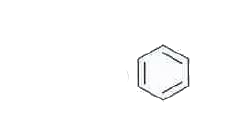 B
B C
C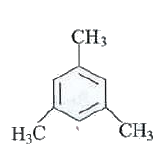 D
D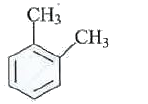
Identify A in the following sequence of reactions
ANH3−−→1 molBCHCI3−−−−→Alc.KOHCReduction−−−−−→(CH3)2CHNHCH3AEthyl halideBIso-propylamineCn-propyl halideDIso- propyl halideConsider the following sequence of reactions :
HO−O∣∣C−CH3∣C∣CH3−C≡N200∘C−−−→ALiAIH4−−−−−−→H2OB, (B) isA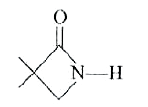 B
B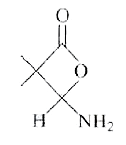 CHO−H2C−CH3∣C∣CH3−CH2−NH2D
CHO−H2C−CH3∣C∣CH3−CH2−NH2D
Give the IUPAC names of the following compounds :CH3CH3−CH3∣C∣CHO−CH2CH3
View SolutionGive the IUPAC names of the following compounds :CH3CH3−CH3∣C∣CHO−CH2CH3
View SolutionCH3−CH3∣C∣CH3−CH=CH−CH3H−Cl−−−→ ?
View SolutionFind the types of all the carbon atoms present in the following compound.
CH3−CH2−CH3∣C∣CH3−CH2−CH3
View SolutionThe major product of the following reaction is:
CH3−CH3∣C∣H−CHCH3∣BrCH3OH−−−−→
View Solution
